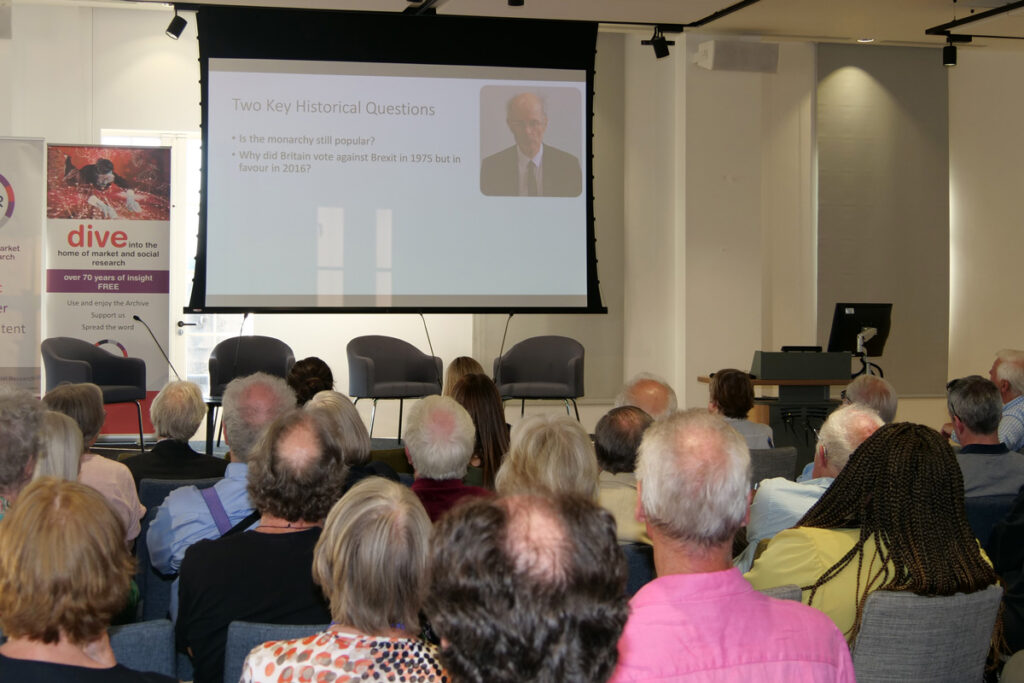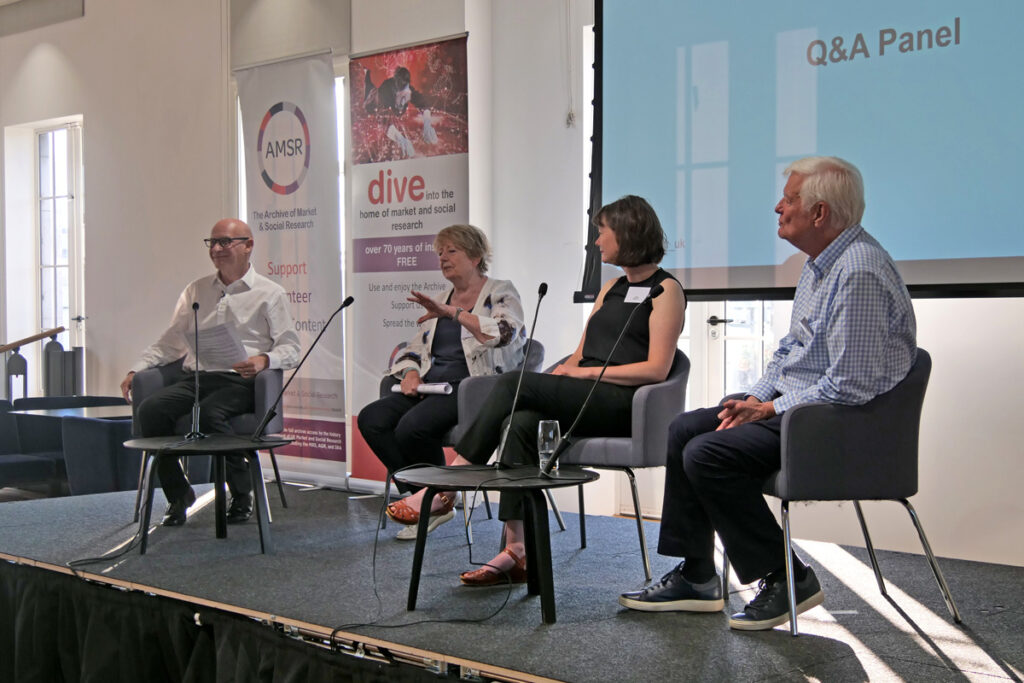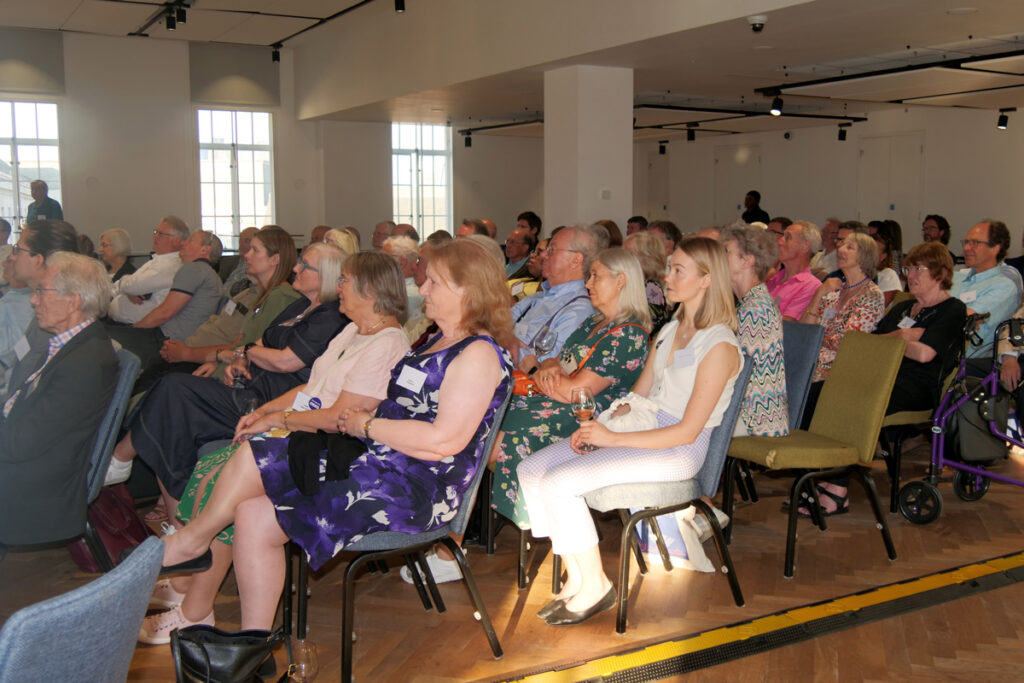
Archives exist to keep things safe – but not secret
On a hot summer evening we gathered on the stylish top floor of King’s College in Bush House by kind permission of the Policy Institute. There was food and drink and lots of familiar faces. There were even generous raffle prizes from the event sponsors Ovation MR. But most of all there was a sharing of some of the jewels that exist within the Archive for Market and Social Research.
Professor Jane Hamlett, a modern historian at Royal Holloway, revealed the story of the growth of pets in British families since Victorian times. Her book, Pet Revolution, charts the evolution of pet keeping from the early days of taming wild animals to the presence of pets in over half of British households by 1963. Her research included cultural references to pets, appearances of pets in family photos, the effect of pets on the economy and, of course, the AMSR.

Professor Jane Hamlett
Data from the Reader’s Digest reveals that in 1963 20% of households had at least one cat but equally 20% had at least one caged bird (budgies, canaries, parrots and mynah birds in case you are too young to remember). Unimaginable from today’s perspective; cat ownership has grown whilst caged bird ownership has dwindled. By 1973 cat ownership had grown sufficiently to warrant a survey of the relationship between owners and their cats allowing manufacturers of petfood to segment the market for their brands. I suspect the segments of ‘cosseters’, ‘acceptors’ and ‘resenters’ would be recognisable to cat owning families today (although as one questioner pointed out – do we really own cats or do they own us?).
Professor Sir John Curtice from the University of Strathclyde made a guest appearance via video. He was sharing his thoughts on the long view of polling statistics and how sources such as the AMSR provide vital context for understanding current political and social events. He reprised his insightful analysis of the two referendums on the EEC in 1975 and 2016. (And Professor Barwise, the AMSR Chair, confirmed that the plural of referendum is indeed referendums. And I checked in the OED.) The similarities and the differences in public opinion leading up to each of the votes shows clearly that lessons could have been learned by both sides to improve their arguments and the targeting of their message.

Professor Sir John Curtice, on video
Sir John also used data from the AMSR to look at the popularity of the monarchy in a long-term context. Today, the monarchy enjoys the support of about half of the population with roughly a quarter being more negative. That is a drop from the 1980s and 1990s when two-thirds to three quarters were supportive. The AMSR allowed Sir John to look back to the 1960s when almost 90% were pro-monarchy. As Tim Harford likes to say, when you are looking at a number your first question should be ‘is that a big number?’. The AMSR helps to provide the context for understanding.
Which gives us a neat Radio 2 style segue into Phyllis Macfarlane’s presentation about how we are sharing the ‘secrets’ of the AMSR. As a charity, one of the AMSR’s key objectives is education.

Phyllis Macfarlane, AMSR Head of Contents
We now have a step by step guide on how to use the archive for A-level students of modern British history which has been introduced into 18 schools already. AMSR is ideal for schools as it is free, easy to use and introduces pupils to using archives (it’s not as scary as it sounds). And schools are ideal for the AMSR because pupils will go on to university and jobs where they can spread the word. The next push will be into University courses and MR industry training.
AMSR Chief Executive Adam Phillips closed the session by thanking everyone who had helped to build the archive to date. But he also took the opportunity to remind us that there is still much to achieve.

Adam Phillips, AMSR Chief Executive
We still need volunteers to help manage the content; we need people who are willing to be ambassadors for schools (all over the country); we still need content to be donated (there is a real gap from the mid 90s onwards where reports were becoming increasingly digital and there were just fewer paper copies); and we still need money to upgrade access to the archive and to have some salaried posts (donations welcome from individuals, organisations and legacies). If you can help with any of these, please get in touch.

Q&A in full swing! Professor Paddy Barwise, AMSR Chair; Phyllis Macfarlane; Professor Jane Hamlett; Adam Phillips
While the job of making the past safe is far from over we now understand a lot more about how to do it. (Indeed it will never end as we continue to capture and protect the present.) We are now engaged in the next phase of making sure that the contents of the archive do not remain a secret and are not only accessible but actually used by this and future generations.
David Starkey, the historian, talks of the monarchy as the social contract between past, present and future. Perhaps in its own modest way the AMSR is a little like the monarchy.

Jim Whaley, CEO of event sponsor Ovation MR

Thanks to everyone for their support!

Enjoying the company and the weather near the roof terrace
Contributed by Paul Edwards
Date posted: 26th June 2023
Photos by Jane Bain
